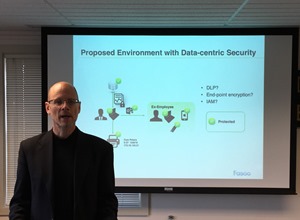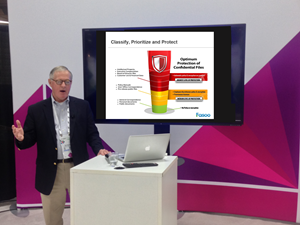
- Ron Arden, Executive Vice President of Fasoo, Inc., spoke to members of the Rochester Institute of Internal Auditors (IIA) at the Hilton DoubleTree Hotel in Rochester, NY on December 7, 2016. Ron delivered a presentation on “Defending Your Intellectual Property Against Cyber and Insider Threats ” to this annual event and showed attendees how to use Fasoo’s enterprise digital rights management to protect sensitive information from insider threats and cyber attacks. With the changing...
- Ron Arden, Executive Vice President of Fasoo, Inc., spoke to members of the Rochester Institute of Internal Auditors (IIA) at the Hilton DoubleTree Hotel...




